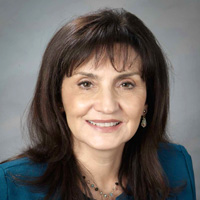How the 401(k)-IRA Rollover Thought Process Works
Every decision has a consequence. From RMDs and taxes to passing on an inheritance, go step by step to make an informed choice.


Approaching 70 in less than a year, my client Cathy — trim, vibrant, silver hair up in a bun — is still enjoying her work and has no plans to retire.
But with that milestone age of 70½ right around the corner — the age when required minimum distributions kick in — she had questions.
Cathy’s family is important to her, and her mind was focused on what to do about her 401(k). She learned by calling her plan’s custodian that there are limitations on how her grandchildren can inherit some of that money. The plan isn’t as flexible as she would like.

Sign up for Kiplinger’s Free E-Newsletters
Profit and prosper with the best of expert advice on investing, taxes, retirement, personal finance and more - straight to your e-mail.
Profit and prosper with the best of expert advice - straight to your e-mail.
The plan custodian suggested she might want to move some of her 401(k) funds to an IRA, but Cathy wasn’t sure what that would mean when it comes to taxes for her and the ones she loves. You see, with everything there is a trade-off, a pro, a con, maybe even a string attached. Cathy wanted to know what she was in for.
Advantages of an IRA rollover
On the “pro” side, she would have more choices. She could invest in almost any financial instrument with her IRA funds, including something that might better meet the objectives she had in mind when thinking of her grandchildren. Her 401(k) plan’s options are limited.
She also would be able to create a stretch IRA to benefit the grandchildren. A stretch allows each beneficiary to take distributions based on his or her individual age and life expectancy according to the IRS table.
Cathy liked the idea of providing steady income to help with school expenses, a home purchase and whatever else might come up as her grandchildren got older. She also liked that the IRA would always have her name on it. She truly felt that would be a legacy.
Still, she wanted to know what the trade-offs would be.
Advantages of sticking with a 401(k)
While Cathy works, her 401(k) has some benefits. She can continue to contribute pretax dollars without an age restriction. That part wouldn’t change by rolling some of the account over to an IRA. She would still be able to make those contributions.
More important, as long as she keeps working for her current employer, Cathy is also exempt from taking a required minimum distribution (RMD) on that particular 401(k) when she turns 70½. If she rolled any of the 401(k) into an IRA, that IRA would become subject to the RMD. At 70½, she’d have to take out money, whether she wanted it or needed it. And she’d have to pay taxes on it.
This is a vital consideration — the string attached, so to speak. Cathy feels her work helps her stay healthy, so she plans to keep at it for years to come. Her husband already has Social Security and a pension, and Cathy will start Social Security at age 70. The RMDs would only add to their tax burden, and Cathy wanted to know by how much. She had several questions:
- What would that RMD cost in overall taxes each year?
- Would the extra income raise the percentage of Social Security income that could be taxed?
- Or, if the RMD was small, would it have any impact at all?
RMD possibilities
Cathy also had to decide what she should do with the RMD funds she took from the IRA.
She knew she wanted to earmark the money for her grandchildren, but she would have to determine how to best position the now-taxed dollars to maximize their benefit. She could create a stock portfolio and, as long as she didn’t sell anything, she wouldn’t pay taxes on it. She would have to pay taxes on any dividends earned, but then she could reinvest the money she made. Cathy will want to consider how capital gains might affect her investments before making any final decisions. On death, the stock would receive a step up in basis, and therefore would not be taxed to her grandchildren.
Her other option was life insurance. She could purchase a policy into which she would put her RMDs. This would also distribute money tax free to her grandchildren.
Decision time
Ultimately, after going over all the alternatives and their implications, Cathy chose to roll a portion of her 401(k) into an IRA and name her grandchildren as beneficiaries to create the “stretch” for them. She decided to use the RMDs for life insurance to further her legacy goals.
So much in our retirement planning is about more than money. Often our choices reflect our values in life. Cathy decided to face the possibility of additional taxes so she could provide financial security for her grandchildren.
What are your values? What would you have done?
Kim Franke-Folstad contributed to this article.
Get Kiplinger Today newsletter — free
Profit and prosper with the best of Kiplinger's advice on investing, taxes, retirement, personal finance and much more. Delivered daily. Enter your email in the box and click Sign Me Up.

Nancy Fleming, CFP®, is the president of Fleming Financial Services, based in Gilbert, Arizona. She is an Investment Adviser Representative and licensed insurance professional.
-
 Before You Invest Like a Politician, Consider This Dilemma
Before You Invest Like a Politician, Consider This DilemmaAs apps that track congressional stock trading become more popular, investors need to take into consideration some caveats.
By Ryan K. Snover, Investment Adviser Representative
-
 How to Put Together Your Personal Net Worth Statement
How to Put Together Your Personal Net Worth StatementNow that tax season is over for most of us, it's the perfect time to organize your assets and liabilities to assess your financial wellness.
By Denise McClain, JD, CPA
-
 Before You Invest Like a Politician, Consider This Dilemma
Before You Invest Like a Politician, Consider This DilemmaAs apps that track congressional stock trading become more popular, investors need to take into consideration some caveats.
By Ryan K. Snover, Investment Adviser Representative
-
 How to Put Together Your Personal Net Worth Statement
How to Put Together Your Personal Net Worth StatementNow that tax season is over for most of us, it's the perfect time to organize your assets and liabilities to assess your financial wellness.
By Denise McClain, JD, CPA
-
 Bouncing Back: New Tunes for Millennials Trying to Make It
Bouncing Back: New Tunes for Millennials Trying to Make ItAdele's mournful melodies kick off this generation's financial playlist, but with the right plan, Millennials can finish strong.
By Alvina Lo
-
 Early-Stage Startup Deals: How Do Convertible Notes Work?
Early-Stage Startup Deals: How Do Convertible Notes Work?Some angel investors support early startups by providing a loan in exchange for a convertible note, which includes annual interest and a maturity date.
By Murat Abdrakhmanov
-
 SRI Redefined: Going Beyond Socially Responsible Investing
SRI Redefined: Going Beyond Socially Responsible InvestingNow that climate change has progressed to a changed climate, sustainable investing needs to evolve to address new demands of resilience and innovation.
By Peter Krull, CSRIC®
-
 Here's When a Lack of Credit Card Debt Can Cause You Problems
Here's When a Lack of Credit Card Debt Can Cause You ProblemsUsually, getting a new credit card can be difficult if you have too much card debt, but this bank customer ran into an issue because he had no debt at all.
By H. Dennis Beaver, Esq.
-
 Going to College? How to Navigate the Financial Planning
Going to College? How to Navigate the Financial PlanningCollege decisions this year seem even more complex than usual, including determining whether a school is a 'financial fit.' Here's how to find your way.
By Chris Ebeling
-
 Financial Steps After a Loved One's Alzheimer's Diagnosis
Financial Steps After a Loved One's Alzheimer's DiagnosisIt's important to move fast on legal safeguards, estate planning and more while your loved one still has the capacity to make decisions.
By Thomas C. West, CLU®, ChFC®, AIF®